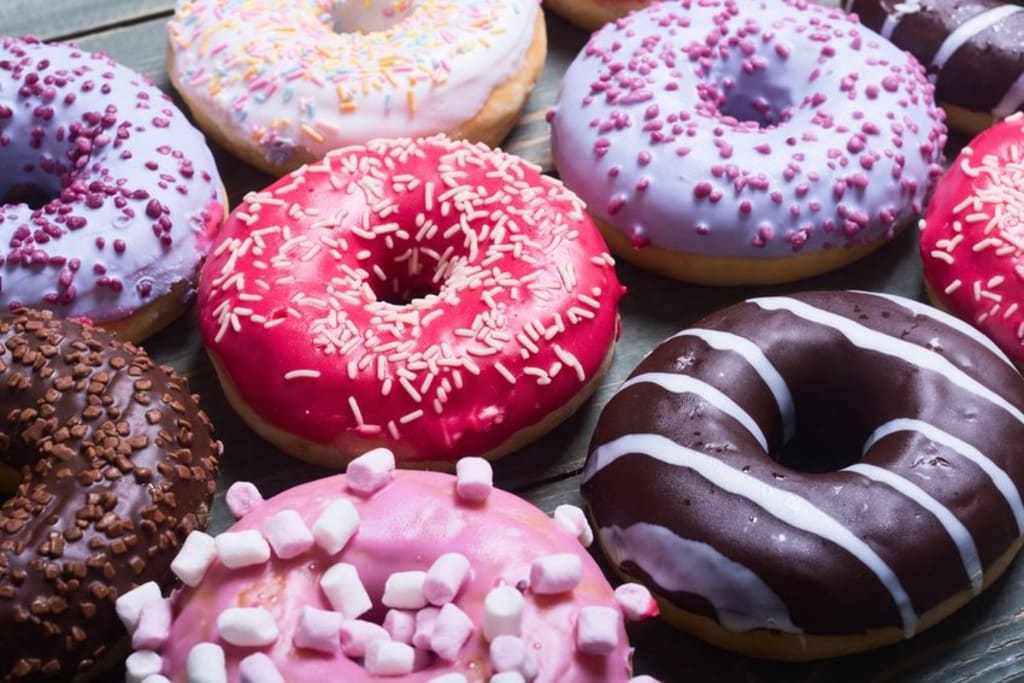Do You Know Why Doughnuts Have Holes?
There are interesting theories about doughnut holes.

Most people love doughnut (also spelled donuts). However, they pick them up and eat them without knowing why the hole is there. Not all doughnuts have holes. The first doughnut made by the Dutch colonists in New Amsterdam didn't have holes. They were flat and looked like small pancakes flavored with nuts and fruits.
Theories About the Holes in Doughnuts
There are several theories about the origin of doughnuts with holes. A popular theory is about a ship captain named Hanson Gregory and his mother named Elizabeth. The story is that in the 1800s, Elizabeth made the best deep-fried dough.
She made a big batch of fried dough with spices for one of her son’s voyages. She put nutmeg, cinnamon, hazelnuts in the center where the dough wouldn't cook evenly. Since it was dough with nuts inside, she called them dough-nuts. That's how the pastry got its name. Over time, Elizabeth simply eliminated the center altogether so the dough could cook evenly all the way through without the center being a doughy pocket.
Another theory is credited with Hanson using the doughnuts his mother made. He poked a hole in the middle so she could put the pastry on his steering wheel because he needed both hands to control the vessel. Both theories about the mother and son are believable.

Doughnut Holes For Sale
A lot of unused dough was left over after the timely task of punching holes in the pastry. Bakers decided to sell them instead of throwing them away. Today, the process is automated. Customers can purchase doughnut holes.
In 1972, an executive at Dunkin’ Donuts decided to punch the dough and make it a separate treat. The holes, called “Munchkins,” appealed to kids and to some adults.
Today, machines are designed to make doughnuts in a round shape with a hole. There is no need to punch out a hole later. Sorry if this is a spoiler alert, but the doughnut holes you purchase aren't really doughnuts holes at all.

Type of Doughnuts
There are two common types of doughnuts. There is the ring doughnut as shown in the photo above and the filled doughnut.
Ring doughnuts can be covered with glaze or sugar icing. They can also be topped with chocolate, powdered sugar, cinnamon, sprinkles, or fruit.
Filled doughnuts can contain fruit preserves, jelly, jam, cream, custard, or other sweet fillings.
Is It Doughnut or Donut?
Over 10 billion doughnuts are consumed every year. Both words are pronounced the same, and both spellings are acceptable. It seems as though "doughnut" is the most popular spelling. However, it really depends on where you are buying the delicious fried dough. Both of the popular doughnut chains make their product the same way. So, the spellings have nothing to do with how they taste or how they are made at Krispy Kreme Doughnuts or at Dunkin' Donuts.
The word "doughnut" is the original spelling and has seniority because it has been around since the 1800s. Most dictionaries and official style guides prefer "doughnut." "Donut" has become more popular because it is shorter and easier to spell. Also, "donut" is a variant of the longer word "doughnut."
The international version of the word is "doughnut." The American version is "donut." While both spellings are correct and acceptable, "doughnut" is used by most people. It really is a matter of personal preference which one you use in writing and which one your computer's spell checker will accept.
No matter which word you write, it would be better to be consistent. As you can see, the word is spelled "doughnut" throughout this article.
About the Creator
Margaret Minnicks
Margaret Minnicks shares articles with readers all over the world. Topics include celebrities, royal family, movies, television, foods, drinks, health issues, and other interesting things. Thanks in advance for TIPS that are sent my way.






Comments
There are no comments for this story
Be the first to respond and start the conversation.